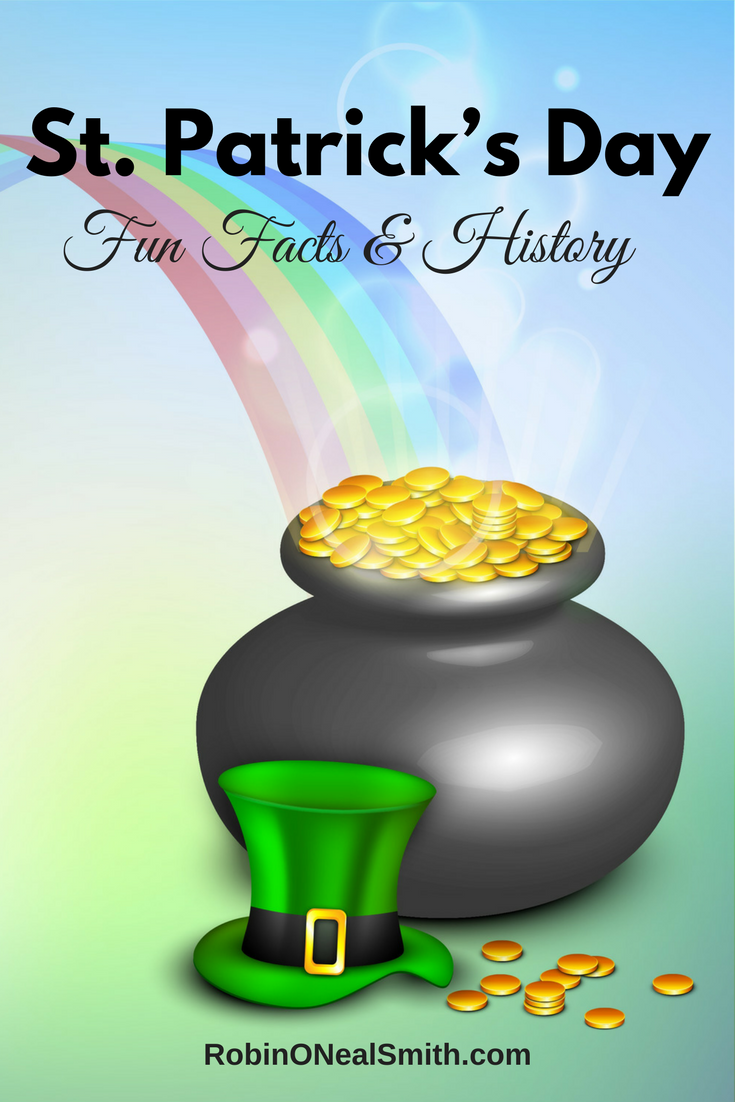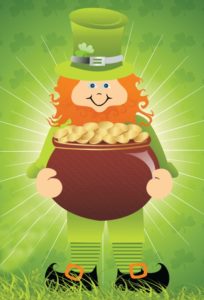As you prepare to enjoy some St. Paddy’s Day fun with your family, it may be a good time to learn about the history of this day and why we celebrate it.

St. Patrick’s Day Fun Facts & History
As you prepare to enjoy some St. Paddy’s Day fun with your family, it may be a good time to learn about the history of this day and why we celebrate it. So get your Irish on and learn something new. Then, use what you learn to play trivia games with your family to celebrate your Irish ancestry.
Why do we wear green on St. Patrick’s Day?
Traditionally, the color green represents Ireland or the Emerald Isle. However, according to legend green also has the magical power to make people invisible to leprechauns or other fairy creatures. That means, wearing green can keep you from getting pinched by mischievous leprechauns. If you don’t wear green on St. Patrick’s Day, watch out, you’ll get pinched!
Why shamrocks?
 In ancient Ireland, shamrocks were the symbol of the rebirth of spring and were considered a sacred plant. In the 1600s the shamrock became the symbol of Irish nationalism. During a time when the English were invading Irish land, people would wear shamrocks as a symbol of their heritage and loyalty to their country.
In ancient Ireland, shamrocks were the symbol of the rebirth of spring and were considered a sacred plant. In the 1600s the shamrock became the symbol of Irish nationalism. During a time when the English were invading Irish land, people would wear shamrocks as a symbol of their heritage and loyalty to their country.
Where did the leprechaun come from?
 The leprechaun most likely originated from Celtic folklore and their belief in fairies— tiny men and women with magical powers for both good and evil. In Celtic tales, leprechauns were the ones who fixed shoes for other fairies. They were grumpy, mean-spirited, and known for their deception and trickery. The leprechaun was never a symbol of St. Patrick’s Day, but in 1959 a Disney movie transformed the leprechaun’s image into that of a cheery, good-hearted soul.
The leprechaun most likely originated from Celtic folklore and their belief in fairies— tiny men and women with magical powers for both good and evil. In Celtic tales, leprechauns were the ones who fixed shoes for other fairies. They were grumpy, mean-spirited, and known for their deception and trickery. The leprechaun was never a symbol of St. Patrick’s Day, but in 1959 a Disney movie transformed the leprechaun’s image into that of a cheery, good-hearted soul.
Who is Saint Patrick?
St. Patrick is the patron saint of Ireland, but he was actually born in England. As a young man, he was taken prisoner by the Irish and held in captivity for six years. During that time he became a devout Christian. It is said that he heard the voice of God, which helped him escape. Later, as the story goes, he had visions of an angel, who told him to return to Ireland as a missionary. It is widely believed that Patrick was the one who introduced Christianity to Ireland. It is also believed that he passed away on March 17, which is how St. Patrick’s Day came to be celebrated then.
Did You Know:
Initially, St. Patrick’s Day was observed as a religious holiday. Until the 1970s, all pubs were forced to close on March 17th out of respect for the holiday. Then, in 1995, the government of Ireland decided to use St. Patrick’s Day as a chance to promote tourism, which helped it become a world-celebrated holiday.
The largest St. Patrick’s Day celebrations in America happen in New York City, Boston, Massachusetts, and Savannah, Georgia.
How do you celebrate St. Patrick’s Day?
Grab our Car Packing List

Subscribe to get our latest content by email.